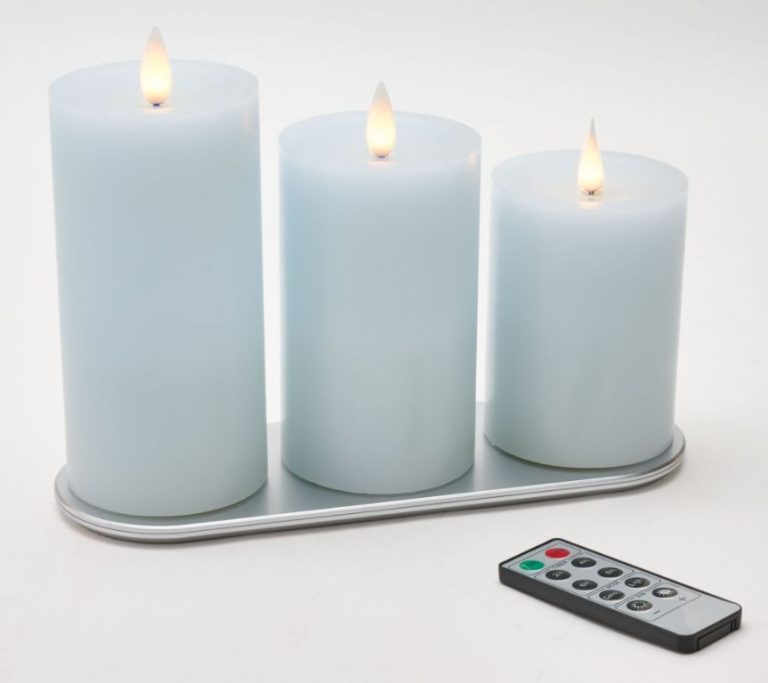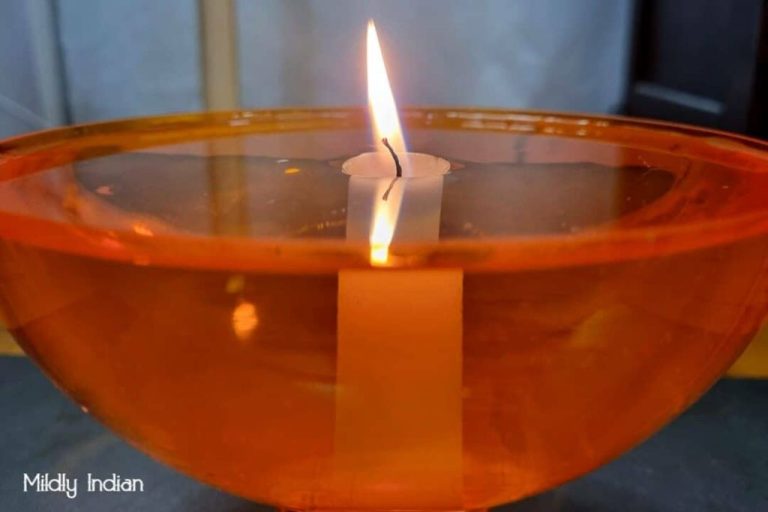Are Soy Candles The Best Candles?
Soy candles have grown in popularity in recent years as a natural alternative to traditional paraffin wax candles. Made from soybean oil, soy candles are often marketed as a cleaner burning, longer lasting, and more sustainable option compared to standard candles.
Proponents claim soy candles offer benefits like cooler burning temperatures, less soot, and natural fragrances. Some even argue soy candles are better for the environment given that soybeans are a renewable crop. However, not all soy candle claims may stand up to scrutiny.
This article will provide an overview of soy candles, their purported benefits, and whether they live up to being called the “best” candle option.
What Are Soy Candles?
Soy candles are made from soy wax, which is derived from soybeans. This is the key difference from traditional paraffin wax candles, which are made from petroleum. As described by Christina Home Designs, “Soy wax is made from hydrogenated soybean oil. It is a renewable and sustainable resource” (source). Soy wax burns cleaner than paraffin wax, producing less soot and smoke.

Soy wax was first used for candle making in 1992. It rose to prominence in the late 1990s as a natural alternative to paraffin. Nowadays soy candles are one of the most popular candle varieties on the market.
Pros of Soy Candles
One of the main benefits of soy candles is that they tend to burn longer and cleaner than traditional paraffin wax candles. Soy wax has a lower melting point which allows the wax to liquify evenly as the candle burns. This leads to a consistent burn with a larger wax pool compared to paraffin candles. The bigger wax pool means more surface area of the wick is exposed to the melted wax, allowing for an even burn from the middle to the edges of the candle. Studies have shown some soy candles can burn over 50% longer than paraffin candles.
The natural cotton wicks used in soy candles, along with the lower soot content, also contribute to a cleaner burn. There is less soot and smoke produced while burning compared to paraffin wax. This makes soy candles ideal for indoor use as they produce less messy drips and residue. The lack of petroleum by-products also gives off less unpleasant fumes. Soy wax has a faint smell similar to crayons or vegetables during burning. Overall, the cleaner burn produces less odor and is gentler for those sensitive to artificial fragrance.
Cons of Soy Candles
While soy candles have several benefits, they also have some drawbacks to consider. Two main downsides are that soy candles tend to be more expensive and have less fragrance throw than other candle options.
The raw materials and process used to make soy wax mean it costs more per pound than paraffin wax. Since more soy wax is required to make a candle, the overall candle price is higher. Soy wax can cost twice as much as paraffin [1]. This makes soy candles less affordable for some buyers.
In addition, soy wax does not hold fragrance oils as well as paraffin. The natural soy wax interferes with scent throw, meaning soy candles are unlikely to fill a whole room with fragrance like paraffin candles can. The lower fragrance throw of soy has been demonstrated in testing [2]. For those who buy candles mainly for the scent, this could be a drawback.
While soy wax has sustainability benefits, its higher price point and weaker scent throw are factors to weigh when choosing the best candle option for your needs.
Other Natural Candle Options
Soy wax is not the only natural alternative when it comes to candle making. Other popular options include beeswax and coconut wax.
Beeswax is made from honeycomb produced by honey bees. It has been used in candle making for centuries, prized for its natural honey scent and clean-burning properties. Beeswax candles are harder and burn longer than soy candles. However, they can be more expensive and prone to dripping if not properly wicked.
Coconut wax comes from the oils of coconut meat. It is a relatively new option in candle making that has been gaining popularity. Coconut wax burns cleanly and has good scent throw. It melts at a lower temperature than soy wax, so coconut wax candles often have a smoother melt pool. But the texture can be prone to cracking and separating.
Overall, beeswax and coconut wax provide natural, non-toxic alternatives for candles. But soy wax remains the most versatile, affordable, and easy-to-use option among the major natural waxes.
Source: https://liveblogspot.com/shopping/7-reasons-choose-pure-natural-candles/
Testing Soy Candle Claims
When evaluating soy candles, it’s important to test their claims through proper candle testing methods. This includes conducting burn tests and measuring key performance criteria.
According to CandleScience, a basic burn test involves burning a candle in increments to evaluate criteria like wax pool shape, fragrance throw, residue, and more. Each candle should burn evenly, have a complete melt pool, and exhibit good fragrance throw without producing excess soot. As noted by Armatage Candle Company, burn tests establish that a candle meets expected safety and performance standards.
To evaluate soy candle’s claims around fragrance, you can measure and record fragrance throw at specific burn intervals. This helps determine strength and consistency of scent. Proper wick testing is also key, as the wrong wick can lead to issues like tunneling. Testing helps ensure the soy wax, wick, and fragrance are well-balanced.
While home testing has limitations, candle makers rely on lab burn testing to fully validate claims. But basic burn testing at home can still provide valuable insights on how a particular soy candle performs.
Soy Candle Safety
When buying any candle, it’s important to consider safety. With soy candles, here are some key things to look for:
Lead Testing
Some candle wicks contain lead to help stabilize the wick. Lead exposure can harm human health, especially for children. Reputable soy candle makers will test candles to ensure no lead is present. Look for soy candles labeled lead-free or ask the manufacturer if they test for lead.
Phthalate Testing
Phthalates are chemicals sometimes added to help fragrance last longer in candles. However, phthalates can be toxic and lead to health issues. To avoid phthalates, look for soy candles advertised as phthalate-free or contact the company to ask if they test for phthalates.
Choosing soy candles from manufacturers that voluntarily test for lead and phthalates can give peace of mind. Or consider making your own soy candles so you control exactly what goes into them.
Environmental Impact
Soy candles can have less of an environmental impact than paraffin wax candles when the soy is sustainably sourced. Paraffin wax is a byproduct of petroleum refining, while soy wax comes from soybean crops (Hamry). Soybean crops can be more sustainable when grown in the United States using responsible farming practices that don’t lead to deforestation (The Connection Between Soy Candles and Environmental Health). However, some environmental advocates argue that industrial soybean farming still uses pesticides and genetically modified crops, raising concerns about biodiversity and soil health (Why Soy Candles Are Bad). Ultimately, the sustainability depends on how and where the soybeans are grown.
When sourcing soy wax, look for manufacturers that use American-grown soybeans and avoid soy from deforested regions like the Amazon. Supporting local soy wax producers who utilize organic practices is an environmentally-friendly option. Sustainably produced soy wax makes soy candles a greener alternative to paraffin, but transportation emissions and other factors still impact the overall footprint. The environmental advantages depend on mindful sourcing of the soybeans.
Reviews of Popular Soy Candle Brands
When it comes to popular soy candle brands, Yankee Candle and WoodWick are two of the top names that come to mind. Here’s an overview of some of their top soy candle offerings:
Yankee Candle
Yankee Candle was one of the first major candle companies to offer a soy wax candle line. Their natural soy candles come in a variety of classic and seasonal scents like Clean Cotton, Lilac Blossoms, and Spiced Pumpkin. The soy wax they use is grown in the USA and formulated to provide a clean, even burn and vivid fragrance. Reviews praise the strong scents and long burn times. However, some customers find the glass jars get too hot to handle while the candle is lit.
WoodWick Candles
WoodWick is known for their candles with crackling wood wicks that mimic the soothing sound of a wood fire. Their soy wax candles blend American-grown soy with other natural waxes. Popular scents include Hazelnut Cream, Honeycrisp Apple, and Fireside. Most WoodWick soy candles have a 45-55 hour burn time. Reviews mention the pleasing wood wick sounds and intense, aromatic scents. Negative feedback focuses on the higher prices compared to standard soy candles.
There are also many other smaller soy candle companies gaining popularity through Etsy, farmer’s markets, and online stores. When shopping for soy candles, look for ones with soy wax sourced in the USA for highest quality. Always check reviews to help determine the true scent intensity and burn times. Pay close attention to wick quality, as this impacts the candle’s burn performance.
Conclusion
When determining if soy candles are the best, it’s important to look at the pros and cons.
Some of the key benefits of soy candles include:
- Cleaner burning – Soy wax produces less soot than paraffin wax candles (https://riahswicks.com/blogs/news/why-are-soy-candles-the-best)
- Natural wax – Soy wax comes from soybeans, a renewable and sustainable crop (https://www.urbansplatter.com/2022/03/soy-candles-why-are-soy-candles-the-best-choice-for-your-home/)
- Customizable fragrance – Essential oils mix well with soy wax, allowing for custom scented candles (https://burlapcandle.com/blogs/faq-4)
Some potential drawbacks of soy candles are:
- Higher cost – Soy wax is generally more expensive than paraffin wax
- Sooting issues – Improper wick size can cause more soot with soy
- Scent throw – Soy wax may not allow fragrance to fill a room as well as paraffin
Overall, soy candles can be a great option for many candle enthusiasts. They burn cleanly, use natural sustainable ingredients, and allow for personalized scents. However, they may come with a higher price tag, can produce more soot if not properly wicked, and may not scent a room as strongly. Consider your priorities when choosing between soy and other candle wax types.




